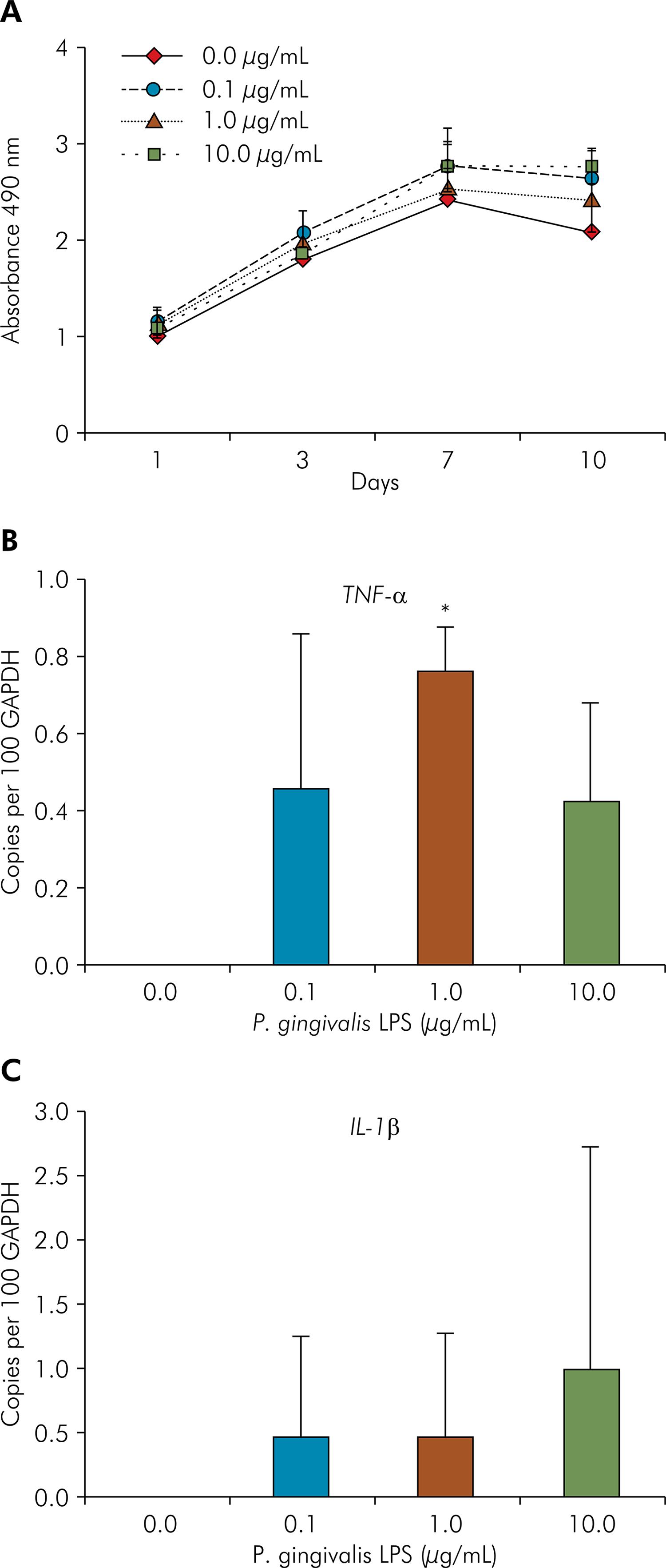Abstract
Periodontitis develops as a result of a continuous interaction between host cells and subgingival pathogenic bacteria. The periodontium has a limited capacity for regeneration, probably due to changes in periodontal ligament stem cells (PDLSCs) phenotype. The aim of this study was to evaluate the effects of lipopolysaccharides from Porphyromonas gingivalis (PgLPS) on mesenchymal phenotype and osteoblast/cementoblast (O/C) potential of PDLSCs. PDLSCs were assessed for Toll-like receptor 2 (TLR2) expression by immunostaining technique. After, cells were exposed to PgLPS, and the following assays were carried out: (i) cell metabolic activity using MTS; (ii) gene expression for IL-1β, TNF-α and OCT-4 by real-time polymerase chain reaction (RT-qPCR); (iii) flow cytometry for STRO-1 and CD105, and (iv) osteogenic differentiation. PDLSCs were positive for TLR2. PgLPS promoted cell proliferation, produced IL-1β and TNF-α, and did not affect the expression of stem cell markers, STRO-1, CD105 and OCT-4. Under osteogenic condition, PDLSCs exposed to PgLPS showed a similar potential to differentiate toward osteoblast/cementoblast phenotype compared to control group as revealed by mineralized matrix deposition and levels of transcripts for RUNX2, ALP and OCN. These results provide evidence that PgLPS induces pro-inflammatory cytokines, but does not change the mesenchymal phenotype and osteoblast/cementoblast differentiation potential of PDLSCs.
Lipopolysaccharides; Periodontal Ligament; Stem Cells, Osteoblasts



